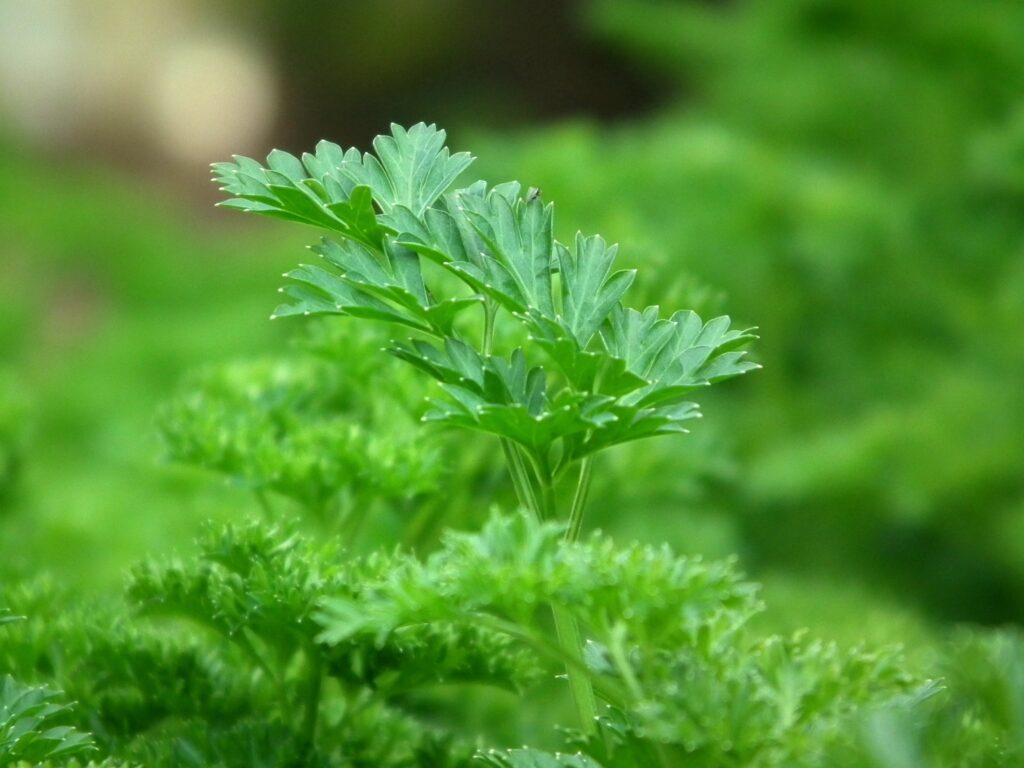March 1st, 2022Glen, about the house
Parsley, Sage, Rosemary and Thyme
No, I’m not about to sing this popular medieval song, it’s merely to point out that herbs have graced the kitchen gardens and apothecarian cabinets since time immemorial and, I suppose, sort of sing their praises.

For without doubt herbs would have to be among the original domesticated plants.
The pleasure of stepping out of the kitchen to gather a handful of fresh herbs to enhance a favourite dish shouldn’t be missed by any gardener or home chef. Herb growing can be as simple as keeping a few plants of mint or parsley in pots at the kitchen doorstep, or as involved as planting and maintaining a traditional formal herb garden that becomes the focal point of your whole garden.
Not all garden herbs are useful only in cooking, some are used widely in cosmetics, many have medicinal value. For example, savory may be a culinary herb, but it may be classed as medicinal when its value in aiding digestion is considered.
Likewise fennel is culinary when used to flavour fish, but cosmetic if used to help rid the face of a few wrinkles. Some herbs, such as horseradish, tree onion and garlic, may be classed as vegetables if grown in the kitchen garden.
Not all herbs are low-growing perennials either. For example, bergamot is a hardy, colourful, flowering shrub, elder is a tree, and sweet briar, a prickly shrub. They differ from vegetables in that these are usually eaten as a main course food, whilst herbs provide added flavour to the whole meal.
Although many herbs are attractive flowering plants, they are distinct from flowers grown solely for their beauty. They may be equally beautiful, but have many other uses when picked fresh, or stored and dried.
Herbs to be cut and dried should be allowed to flower first. After flowering is completed, pick and tie them in small bundles and hang them in a garage or porch away from moisture, until they have completely dried, then store in sealed containers until needed.
Herbs usually do best in a sunny but sheltered position in well-drained and well-composted soil. Be sure to work up the bed, digging in plenty of well-rotted animal manure, compost or leaf mould. If the soil is poorly drained, you should raise the height of the bed by surrounding with a course of bricks, stones or timber. If planting perennial varieties you will be able to assess how many plants will grow comfortably in your bed by allowing each of them an area of at least 45cm x 45cm.
Your perennial herb garden needn’t be isolated from the rest of the garden. It can be linked to the other areas with tree or shrub varieties of herbs in their own right, or simply selected to meld with the herbs because of their aromatic foliage, fragrant flowers or edible fruits. So start your garden with a few of the below today.
Basil: Used in sauces. Basil is readily grown from seeds or seedlings.
Chives: Green leaves add an onion-like flavour to soups, salads and omelettes.
Dill: The seeds are used for flavouring pickles and seasoning soups and stews.
Marjoram: The leaves are used fresh or dried for seasoning, or sprinkled lightly over salads.
Mint: Has many uses, each variety imparting its own particular piquancy and fragrance.
Parsley: Used to flavour or garnish almost any dish or salad.
Rosemary: Perks up any jam or jelly, or an ideal addition to seasoning fish or meat.
Sage: A must for seasoning poultry or meats.
Thyme: The most versatile herb for all dishes – especially egg and cheese.
Got a gardening question: Email glenzgarden@gmail.com










